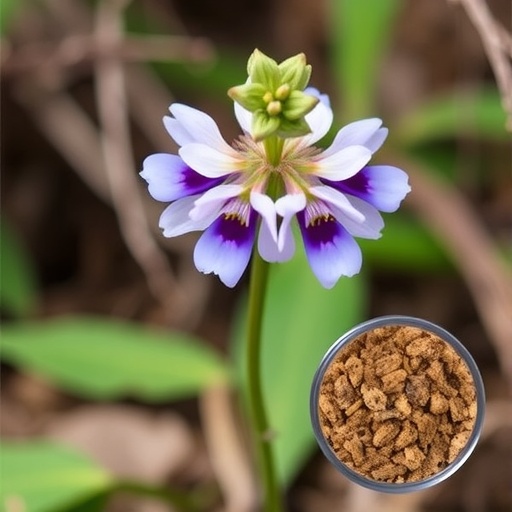Annapolis, MD; April 14, 2017–Score one for the brown marmorated stink bug, again.
Since the pernicious pest arrived in the United States nearly 20 years ago, it has proven difficult to fend off, attacking crops in the summer and invading homes in the fall and winter. And, as a team of researchers has recently found, one of the leading monitoring methods for the stink bug may only be effective for half of the year.
A study set to be published next week in the Entomological Society of America's Journal of Economic Entomology shows that traps baited with the aggregation pheromone of the brown marmorated stink bug (Halyomorpha halys) are not reliable at attracting the insect during its overwintering period, from late fall to early spring.
"Just eight to 20 percent of the stink bugs we saw crawling around hallways were captured," says Rob Morrison, Ph.D., research entomologist at the Unite States Department of Agriculture's Agricultural Research Service (USDA-ARS) and lead author on the study, which tested the traps in infested homes in 2014 and 2016.
The reason, they found, is that the brown marmorated stink bug does not respond to its aggregation pheromone–a chemical signal that insects release into the air–until daylight lengthens to approximately 13.5 hours each day, roughly late April to early May in the United States. Thus, traps baited with the pheromone leave overwintering stink bugs largely unfazed.
Morrison and fellow entomologists at the USDA-ARS Appalachian Fruit Research Station, Virginia Tech University, and North Carolina State University deployed traps in both heated and unheated structures and outside in locations in Virginia, West Virginia, and North Carolina and monitored their performance with weekly counts of stink bugs both trapped and visible nearby. Not only did they find that the traps caught a small fraction of the stink bugs, but the minimal rate at which the insects were trapped was also not correlated with the overall ups and downs in their numbers at each location, meaning the traps aren't reliable for monitoring purposes either.
The results mean that, for homeowners trying to use traps to capture stink bugs in their homes, prevention is key, because once stink bugs are inside, pheromone traps likely won't be much help. "To prevent brown marmorated stink bugs from gaining access to your house, seal all holes and cracks, including where the roof meets the structure, and where the house meets the foundation," Morrison says.
The research team note in their study that their findings also raise concerns for preventing the further spread of the brown marmorated stink bug, which can hitch rides in shipments of produce around the world. The key question is whether a pheromone trap at a port in the southern hemisphere in summer, for instance, will intercept stink bugs that have just been shipped out of their overwintering period in the northern hemisphere.
While Halyomorpha halys may have won this round, Morrison says he and his colleagues will press on.
"The brown marmorated stink bug may rely on a yet-to-be-identified chemical stimulus or other communication method during the fall when they disperse to overwintering sites and when they emerge during the spring," says Morrison. "Both are areas of active research."
###
"Behavioral Response of the Brown Marmorated Stink Bug (Hemiptera: Pentatomidae) to Semiochemicals Deployed Inside and Outside Anthropogenic Structures During the Overwintering Period," by William R. Morrison, III, Angelita Acebes-Doria, Emily Ogburn, Thomas P. Kuhar, James F.Walgenbach, J. Christopher Bergh, Louis Nottingham, Anthony Dimeglio, Patricia Hipkins, and Tracy C. Leskey, will be published online on April 20 in the Journal of Economic Entomology. Journalists may request advance copies of the study via the contact below.
CONTACT: Joe Rominiecki, [email protected], 301-731-4535 x3009
ABOUT: ESA is the largest organization in the world serving the professional and scientific needs of entomologists and people in related disciplines. Founded in 1889, ESA today has over 6,000 members affiliated with educational institutions, health agencies, private industry, and government. Headquartered in Annapolis, Maryland, the Society stands ready as a non-partisan scientific and educational resource for all insect-related topics. For more information, visit http://www.entsoc.org.
Journal of Economic Entomology publishes research on the economic significance of insects and is the highest-cited journal in entomology. It includes sections on apiculture and social insects, insecticides, biological control, household and structural insects, crop protection, forest entomology, and more. For more information, visit https://academic.oup.com/jee, or visit https://academic.oup.com/insect-science to view the full portfolio of ESA journals and publications.
Media Contact
Joe Rominiecki
[email protected]
301-731-4535 x3009
@EntsocAmerica
http://www.entsoc.org
############
Story Source: Materials provided by Scienmag




